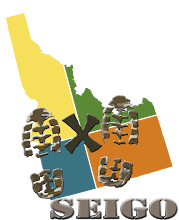Great Blue Heron Rookery Traditional Cache
-
Difficulty:
-

-
Terrain:
-

Size:  (micro)
(micro)
Please note Use of geocaching.com services is subject to the terms and conditions
in our disclaimer.

This easy-to-find, this cache is intended to bring geocachers out
to this Heron Rookery for a look at some interesting birds.
Most of the nests you see in the trees, and the main birds
you’ll see here is the Great Blue Heron (Ardea herodias). The
best time to go is as early in the morning as possible. Evening is
good, too.
Many herons nest in colonies or rookeries (usually high in trees)
for safety purposes. It’s safer here in a colony than nesting
alone because more eyes are on the lookout for predators, and, even
though there are predators here (several Red-tailed Hawks), numbers
make a difference, and predators don’t like getting stabbed
with that long, pointed bill the herons can put through a
good-sized fish with little effort--which could mean death for the
predator (wise counsel for you, too).
Do not confuse these herons, who fly with their necks in an
“S” shape, with cranes, who fly with their necks held
straight out. These 46" long, 6 foot wingspread herons mate, often
for life, but with birds, mating does not mean copulation—it
merely means pairing-off. The female heron builds the nest with
help from the male who will bring nesting material to her, often
expecting a copulatory gift to strengthen the pair bond. This
happens rapidly. The male protects the female and often feeds her
by regurgitating food already swallowed. The female will usually
lay three or four 45x33 mm light blue eggs (25 mm in an inch).
Incubation is by both parents, and the chicks are also cared for by
both. Chicks are semi-precocial (born with gray down feathers
present and their eyes open), and need a lot of parental care. They
probably wouldn’t win any beauty contests. During the first
month of life, a parent will always be present. Later, the chicks
will only need minimal care.
Parents feed them by regurgitating food that has already been
swallowed. After about two months, the chicks will be on their
own.
If you have any questions, either before or after your visit,
please email cricketace44@gobigwest.com
Please do not disturb the birds; they are protected by law. The
idea is to enjoy what nature gives us, not harm it.
Bring your binoculars, a spotting scope if you have one, and
something to sign the log with. Then, after you’ve enjoyed
watching, be sure to write in your online log,how many adults and
chicks you’ve seen and any interesting observations.
Additional Hints
(No hints available.)